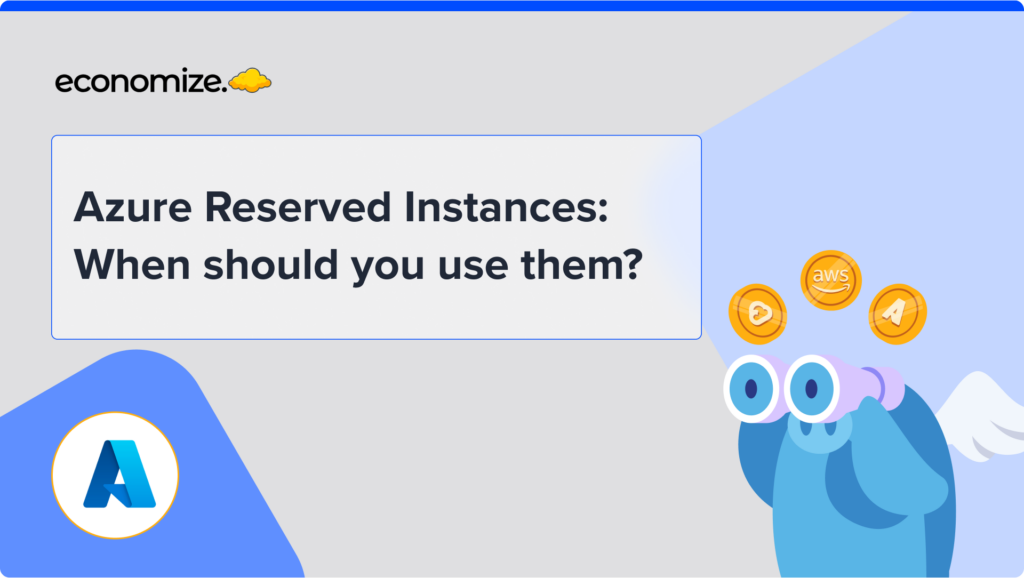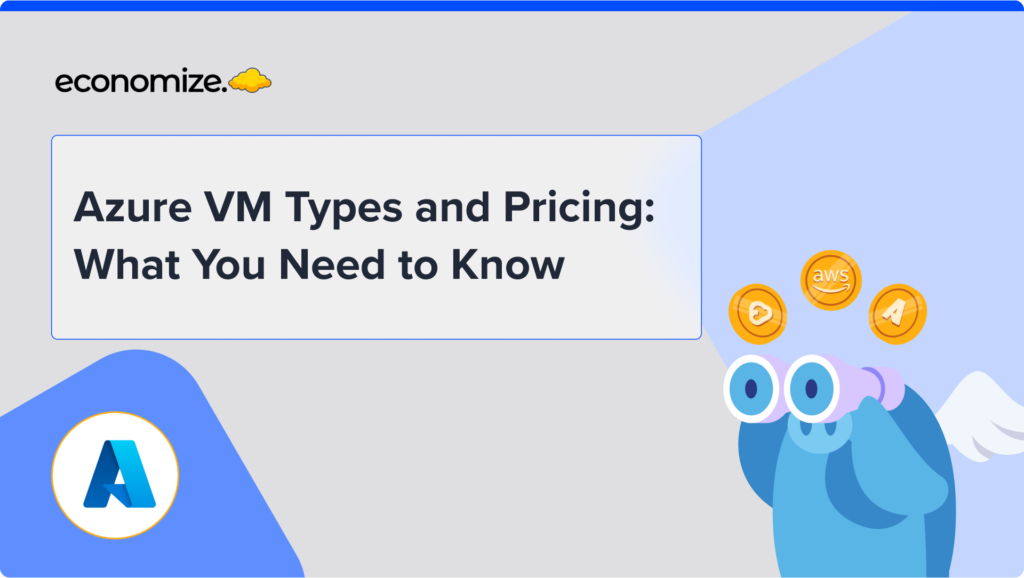As more companies migrate to the cloud, the need for managing and analyzing large amounts of data within the Google Cloud Platform (GCP) environment has become increasingly essential.
Google offers two powerful database solutions to handle this demand: BigQuery and Bigtable. While both databases are designed to manage and store massive amounts of data, they have unique differences that organizations must understand to make informed decisions about their resource utilization and cloud cost management.
In this article, we’ll compare BigQuery and Bigtable, and explore their features, strengths, and use cases. By the end of this article, organizations will have a clear understanding of the differences between the two databases and will be better equipped to choose the right one for their data intensive workloads.
What is Google BigQuery?
BigQuery is a fully-managed, cloud-based data warehousing solution that allows organizations to store and analyze massive amounts of data. It uses parallel processing to quickly run queries on terabytes or petabytes of data and return results in seconds. BigQuery also provides built-in replication for high availability and performance, as well as a serverless architecture for easy scalability and minimal upkeep requirements.
BigQuery Features
- Scalable analysis : BigQuery allows organizations to analyze massive amounts of data quickly and easily.
- Built-in replication: It provides automatic replication for high availability and performance.
- Serverless architecture: BigQuery requires minimal upkeep, making it easy and affordable to use.
- Integration: It can be easily integrated with other Google Cloud services, such as Google Cloud Storage and Google Cloud Dataflow, for a complete data processing pipeline.
BigQuery Use Cases
- Business Intelligence and Analytics: BigQuery can be used to analyze large amounts of data for business intelligence and analytics purposes, such as identifying trends, making data-driven decisions, and optimizing business processes.
- Machine Learning: BigQuery can be used to store and analyze data for machine learning purposes, such as building predictive models and making recommendations.
- IoT Data Processing: BigQuery can be used to store and process large amounts of data from Internet of Things (IoT) devices, such as sensors and smart devices, for real-time analysis and insights.
- Log Analysis: BigQuery can be used to analyze log data from websites, applications, and servers for insights and troubleshooting purposes.
What is Cloud Bigtable?
Cloud Bigtable is a highly scalable, NoSQL, fully-managed database service from Google that is designed to handle large amounts of data with low-latency performance. It is built on Google’s file system (GFS), which provides strong consistency and durability guarantees for data stored in the system. Cloud Bigtable is a part of the Google Cloud Platform and is available on-demand, meaning that customers can quickly and easily provision and deprovision the resources they need.
Cloud Bigtable Features
- High scalability: Cloud Bigtable is designed to scale horizontally to handle massive workloads and datasets with high performance.
- Low-latency reads and writes: Cloud Bigtable is optimized for low-latency reads and writes, which makes it ideal for applications that require real-time access to data.
- High availability: Cloud Bigtable is built to be highly available, which means it can continue to operate and serve data even in the event of hardware failures or outages.
- Strong consistency and durability guarantees: Cloud Bigtable is built on top of Google’s distributed file system, which provides strong consistency and durability guarantees for data stored in the system.
- Flexible data model: Cloud Bigtable allows for the storage of data in a flexible, column-oriented format, which makes it well-suited for a wide range of data types and use cases.
Cloud Bigtable Use Cases
- Ad tech platforms: Cloud Bigtable can be used to store and analyze large amounts of user data, such as clickstream data, in order to optimize ad targeting and delivery.
- Financial services: Cloud Bigtable can be used to store and analyze financial data, such as stock prices and trading volumes, in real-time.
- Gaming: Cloud Bigtable can be used to store and analyze player data, such as game statistics and leaderboard information, in real-time.
- Genomics: Cloud Bigtable can be used to store and analyze genomic data, such as DNA sequencing data, in order to support research and development in the life sciences.
Choosing the right GCP Database
In this section, we will discuss some essential factors to consider when selecting a database, including data type and volume, query complexity, real-time processing needs, cost considerations, and scalability. By considering these factors, you can make an informed decision and choose the right database solution for your organization’s specific requirements.
Data Type and Volume
One of the most critical factors to consider when choosing a database is the type and volume of data that needs to be stored and processed. BigQuery is well-suited for structured data, such as data from databases, spreadsheets, and logs. It can handle massive volumes of data, making it ideal for businesses that need to store and analyze terabytes or petabytes of data.
On the other hand, Bigtable is designed to handle unstructured data, such as audio, video, and text. It is ideal for businesses that need to store and process large amounts of unstructured data in real-time. Additionally, Bigtable can scale horizontally to handle petabytes of data, making it well-suited for businesses that need to store large amounts of unstructured data.
Query Complexity
Another factor to consider when choosing a database is the complexity of the queries that need to be run. BigQuery is designed to handle complex queries that require advanced analytics, such as machine learning, data mining, and predictive modeling. It uses a SQL-like query language that makes it easy for analysts and data scientists to extract insights from large datasets.
In contrast, Bigtable is optimized for simple, single-row lookups and range scans. While it can handle more complex queries, it is not as well-suited for advanced analytics as BigQuery. Therefore, if your organization requires complex query processing, BigQuery would be the better option.
Real-Time Processing Needs
Real-time processing is a critical factor for businesses that require instant insights and decision-making. Bigtable is designed for real-time processing and is capable of handling millions of read and write requests per second with low latency. This makes it ideal for businesses that require real-time data processing, such as those in the finance, gaming, and advertising industries.
BigQuery, on the other hand, is not optimized for real-time processing. While it can handle near-real-time processing, it is not as efficient as Bigtable. Therefore, if your organization requires real-time processing, Bigtable would be the better option.
Cost Considerations
Cost is an important consideration when choosing a database. BigQuery charges users based on the amount of data stored and the amount of data processed. It has a flexible pricing model that allows businesses to control costs by choosing the most cost-effective storage and processing options. Read more about BigQuery Pricing & Cost optimization recommendations.
Bigtable, on the other hand, charges users based on the amount of data stored and the number of read and write requests made. It has a more complex pricing model that can be challenging to estimate in advance. Therefore, if cost is a critical factor, BigQuery may be a better option due to its flexible and predictable pricing model. For a comprehensive understanding of your BigQuery expenditures, visit our BigQuery Pricing Calculator.
Scalability
Scalability is another important factor to consider when choosing a database. Both BigQuery and Bigtable are designed to be highly scalable and can handle large amounts of data. However, Bigtable is more scalable than BigQuery, as it can handle petabytes of data with low latency. It can also scale horizontally to meet the demands of growing businesses.
In contrast, BigQuery is more limited in its scalability, as it can only handle terabytes or petabytes of data. While it can scale vertically to increase processing power, it may not be the best option for businesses with rapidly growing data needs.
BigQuery vs Bigtable: What is the difference?
The table shows the key differences between BigQuery and BigTable in various categories, including data type, querying, analysis, data format, integration, administration, write throughput, consistency, durability, customization, scalability, and use cases.
| Category | BigQuery | BigTable |
|---|---|---|
| Data Type | Structured | Unstructured/Semi-structured |
| Querying | Fast, scalable | Real-time, low-latency |
| Analysis | Complex algorithms, machine learning | Real-time processing |
| Data Format | CSV, JSON | Any |
| Integration | Google Dataflow, Google Analytics | Custom applications |
| Administration | Fully-managed, minimal maintenance | Customizable, requires administration |
| Write Throughput | Lower | Higher |
| Consistency | Eventual | Strong |
| Durability | High | Guaranteed |
| Customization | Limited | High |
| Scalability | Highly scalable | Highly scalable |
| Use Cases | Data warehousing, complex analysis | IoT, time-series, real-time applications |
When to use Google BigQuery?
BigQuery is ideal for organizations that need to store and query structured data in a fast and scalable manner. Its parallel processing feature enables quick analysis of vast datasets and the ability to run complex algorithms and machine learning models. Moreover, it’s an excellent choice for organizations with structured data in CSV or JSON files.
Additionally, BigQuery integrates smoothly with other GCP services, such as Google Dataflow and Google Analytics, and is an entirely managed service that requires minimal maintenance and administration.
GCP’s newest update, BigQuery Studio (designed for big data management in organizations using AI, ML, and LLM) is an all-in-one analytics dashboard that streamlines end-to-end analytics workflows, from data ingestion and transformation to sophisticated predictive analysis.
When to use Google Bigtable?
BigTable is ideal for organizations that need to store and process large amounts of unstructured or semi-structured data, such as sensor data or log files. It provides low latency and high throughput for real-time analysis and processing of data, making it perfect for organizations with high write-throughput needs.
Moreover, Bigtable guarantees strong consistency and durability of data, making it an ideal choice for critical applications. Furthermore, it’s highly scalable and can handle massive amounts of data and traffic, making it a preferred database for companies with rapid growth.
A few examples of how companies use BigQuery and Bigtable in their daily operations:
- Spotify uses BigQuery to analyze streaming data and generate personalized recommendations for users.
- Google uses Bigtable to power its search engine and other core applications.
- The New York Times uses BigQuery to analyze web traffic and optimize ad revenue.
- Snapchat uses Bigtable to store and process billions of messages and snaps each day.
- The Home Depot uses BigQuery to improve inventory management and supply chain operations.
- Airbnb uses Bigtable to store user-generated content and personalize search results for users.
Conclusion
Choosing the right database between BigQuery and Bigtable depends on the specific needs of the organization. If the organization deals with structured data that requires complex analysis, BigQuery is the ideal choice. On the other hand, if the organization deals with unstructured or semi-structured data, requires real-time processing, and needs strong consistency and durability guarantees, Bigtable is the preferred option
Furthermore, having a FinOps strategy can help organizations save on their cloud costs and optimize their resources effectively. A FinOps strategy involves understanding cloud usage, creating cost visibility, and cost optimization techniques. With a FinOps strategy in place, organizations can identify and eliminate wasteful spending, take advantage of discounts and savings plans, and ensure that they are getting the best value out of their cloud usage.









